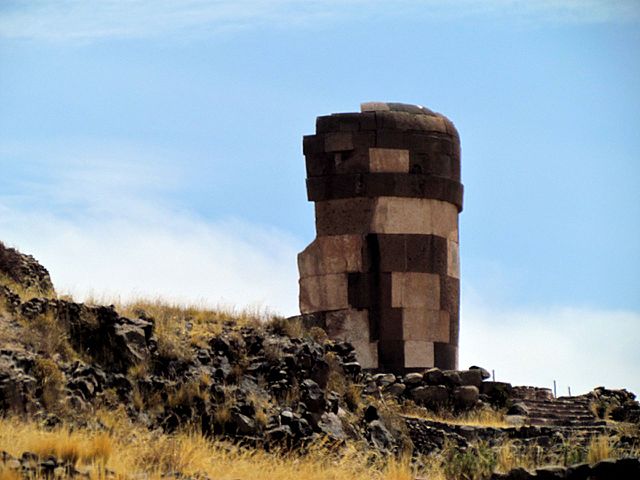
Archaeologists excavating at the Macatón cemetery in Huaral, approximately 45 miles northwest of Lima, Peru, have made an exciting discovery. The National Major University of San Marcos announced on May 15th that they have uncovered a large Pre-Inca empire tomb during their excavations. This 1000-year-old tomb measured approximately 23 feet deep and 23 feet wide.
What’s inside the pre-Inca tomb
Inside the tomb, archaeologists discovered the remains of an important and respected individual, along with the remains of five other people. Additionally, there were four Llamas and various pottery vessels.
The burial site was created by the Chancay culture, which existed before the Incan civilization. The Chancay culture thrived between 1000 and 1500 A.D., as stated in the news release.
The central figure found in the tomb was identified as a sea lord by the archaeologist Pieter Van Dalen Luna. This identification was made possible because of the discovery of a wooden oar, which is the first artifact of its kind found at the Macatón cemetery.
According to Van Dalen, it is highly likely that the sea lord had a significant role related to fishing, hunting shellfish, or some other marine activity.
The National Major University of San Marcos has shared video footage on YouTube, giving us a glimpse of the intricate tomb that was uncovered. The visuals reveal a pile of skeletons and shattered pottery at the bottom of the pit, showcasing the extent of the burial site.
One of the photographs captures the upper part of the wooden oar, positioned against the side of the tomb. This discovery is significant because it is the first time such an artifact has been found at the Macatón cemetery.
The other skeletons discovered within the tomb were likely relatives and servants who were sacrificed. Their presence suggests that they were meant to accompany and serve the deceased in the afterlife.
Additionally, the burial site contained 25 pottery vessels. These vessels were filled with food offerings intended to sustain the deceased in their journey beyond this life.
Understanding of the afterlife
According to experts, the Chancay culture held the belief that when people passed away, they did not simply cease to exist. Instead, they believed that the deceased individuals went through a series of transformative stages, eventually becoming revered ancestors who offered protection. This belief reflected their understanding of the afterlife.
The Chancay culture gradually declined and faded away around 1500 A.D. This period coincided with the expansion of the Incan empire. The rise of the Incan civilization and their territorial expansion may have played a role in the decline and eventual disappearance of the Chancay culture.
#AndinaEnglish Tomb of personage with strong bonds to sea sheds further light on pre-Inca Peru https://t.co/OJVurg5qKw pic.twitter.com/WVwNWSrXcC
— Agencia Andina (@Agencia_Andina) May 24, 2023
More about the excavation site
The excavation site at the Macatón cemetery is situated approximately 165 feet away from a residential neighborhood. This proximity to the houses poses a challenge for archaeologists as it limits their ability to uncover additional tombs.
The tomb belonging to the sea lord is not only the oldest but also the largest among the approximately 80 burials discovered thus far in the Macatón cemetery
The archaeologists involved in the excavation project are planning to conduct further analysis of the remains of the individuals found in the tomb. This continued study aims to deepen our understanding of the burial practices and customs of the Chancay culture, as highlighted in the news release.
See all the latest news from Greece and the world at Greekreporter.com. Contact our newsroom to report an update or send your story, photos and videos. Follow GR on Google News and subscribe here to our daily email!



